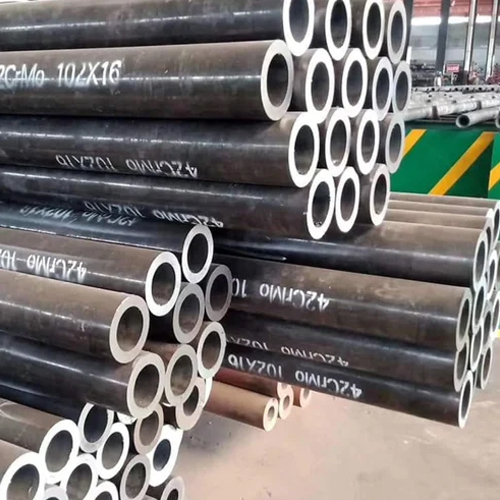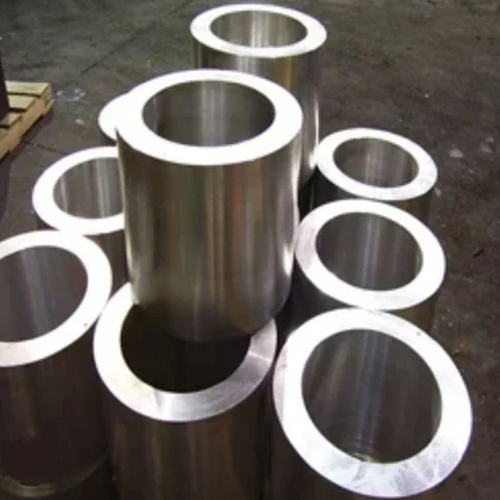
SAE 52100 Baring Steel Pipes
Product Details:
- Feature Strong, Durable
- Other Material Carbon Steel
- Application Hydraulic Pipe Chemical Fertilizer Pipe Boiler Pipe
- Product Type Carbon Steel Pipes
- Material Carbon Steel
- Type Seamless
- Shape Round
- Click to View more
SAE 52100 Baring Steel Pipes Price And Quantity
- 125 INR/Kilograms
- 100 Kilograms
SAE 52100 Baring Steel Pipes Product Specifications
- Hot Rolled
- Strong, Durable
- Carbon Steel
- All Size
- Hydraulic Pipe Chemical Fertilizer Pipe Boiler Pipe
- Seamless
- Round
- Carbon Steel
- 6 Meter (m)
- Carbon Steel Pipes
SAE 52100 Baring Steel Pipes Trade Information
- Cash in Advance (CID) Cash Against Delivery (CAD) Cash on Delivery (COD) Cheque Cash Advance (CA)
- 5000 Kilograms Per Month
- Days
- Asia
- All India
- Mill T.C./ Lab T.C. / Ultrasonic Reports
Product Description
SAE 52100 is a high-carbon chromium steel, primarily used for making bearing components due to its excellent hardness, wear resistance, and fatigue strength. When it comes to SAE 52100 in the form of pipes, it can be particularly beneficial for applications requiring high performance and durability. Here's a detailed description:
Composition
SAE 52100 typically contains:
- Carbon (C) 0.98% - 1.10%
- Chromium (Cr) 0.80% - 1.10%
- Manganese (Mn) 0.25% - 0.45%
- Silicon (Si) 0.15% - 0.35%
- Other elements Small amounts of phosphorus, sulfur, and sometimes other elements.
Properties
- Hardness After heat treatment, SAE 52100 can achieve high hardness levels, typically in the range of 60-65 HRC (Rockwell Hardness Scale).
- Wear Resistance It has excellent wear resistance due to its high hardness and the presence of chromium, which forms hard carbides.
- Toughness Good fatigue resistance makes it suitable for high-stress applications, although its toughness can be somewhat lower compared to some other steels.
- Dimensional Stability Retains dimensional stability under operating conditions, crucial for precision components like bearings.
- Machinability Generally more challenging to machine due to its high hardness but can be machined with appropriate tools and techniques.
Applications
- Bearings Used extensively in rolling element bearings and other components where high wear resistance and load-bearing capacity are required.
- Pipes In applications where bearing properties are desired in a tubular form, such as in specific high-stress environments or where bearing-like performance is needed.
- Automotive and Aerospace Components that require high strength, durability, and resistance to wear and deformation.
Heat Treatment
SAE 52100 steel undergoes specific heat treatments to achieve its desired properties:
- Hardening Typically heated to around 800-850C and then quenched in oil or water.
- Tempering After hardening, tempered at 150-200C to relieve stresses and achieve the desired balance of hardness and toughness.
- Annealing Can be annealed to improve machinability, which involves heating to around 800-850C and then slowly cooling.
Advantages
- Excellent hardness and wear resistance, making it ideal for high-load applications.
- High fatigue strength, which helps in maintaining performance under repetitive stress.
- Good dimensional stability and precision.
Disadvantages
- Can be challenging to machine due to its hardness.
- Relatively high cost compared to some other steel grades.
- Requires precise heat treatment to achieve optimal properties.






 Send Inquiry
Send Inquiry Send SMS
Send SMS Call Me Free
Call Me Free